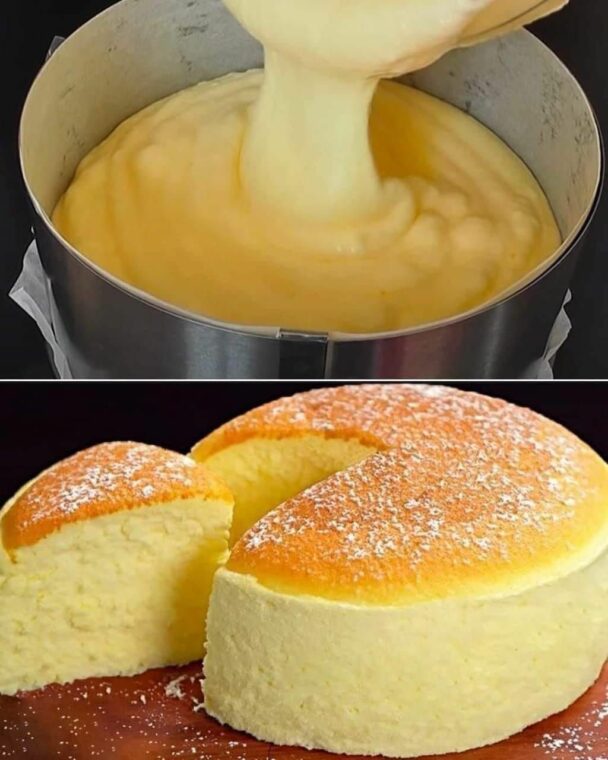
Kentucky Butter Cake is a timeless classic that stands as a testament to the simple elegance of Southern baking. This dessert, with its rich, buttery flavor and tender crumb, effortlessly captures the essence of comfort food, making it a beloved favorite for gatherings, holidays, or just a cozy night in. The unique combination of a moist, vanilla-infused cake with a sweet, buttery glaze not only delights the taste buds but also leaves a lingering warmth that is as inviting as a Southern hug.
The beauty of this recipe lies in its simplicity and the harmonious blend of its ingredients. The use of everyday components like all-purpose flour, butter, eggs, and buttermilk speaks to the cake’s humble origins, yet there’s nothing ordinary about the result. Each element plays a critical role in creating a cake that’s rich yet not overly heavy, with a perfect balance between sweetness and the slight tang of buttermilk. The brown sugar in the batter adds a depth of flavor and moisture that granulated sugar alone cannot achieve, showcasing the thoughtful nuances that make this cake a standout.
Preparing Kentucky Butter Cake is an exercise in the joy of baking, where the process is just as rewarding as the end result. The ritual of creaming butter and sugar, alternating dry and wet ingredients, and the anticipation of the cake’s aroma filling the kitchen during baking, all contribute to the experience. The final touch, a warm, vanilla-laden glaze poured over the cake, not only enhances its flavor but also ensures every bite is irresistibly moist. This cake, with its deep roots in Southern hospitality, invites us to slow down, savor each bite, and appreciate the simple pleasures that homemade desserts bring to our lives.
Ingredients Explanation and Substitutions
For the Cake:
- All-purpose flour: The backbone of the cake, providing structure. For a lighter texture, you could sift the flour before measuring.
- Butter: Use unsalted butter to control the cake’s saltiness. Make sure it’s at room temperature to ensure it creams well with the sugars.
- Buttermilk: Adds moisture and a slight tanginess, complementing the rich butter flavor. If you don’t have buttermilk, you can make a quick substitute by adding 1 tablespoon of lemon juice or vinegar to a cup of milk and letting it sit for 5 minutes.
- Granulated and Brown Sugar: Using both types of sugar adds depth to the cake’s sweetness, with brown sugar providing a hint of molasses flavor.
- Eggs: Act as a binder and help the cake rise. Room temperature eggs incorporate better into the batter.
- Vanilla Extract: Adds flavor. Use pure vanilla extract for the best taste.
- Salt, Baking Powder, & Baking Soda: Salt enhances flavor, while baking powder and soda help the cake rise and become fluffy.
For the Glaze:
- Butter & Sugar: The base of the glaze, providing sweetness and richness.
- Water: Thins the glaze slightly, making it easier to absorb into the cake.
- Vanilla Extract: Adds flavor to the glaze, echoing the vanilla notes in the cake.
Preparation Techniques
Baking the Cake:
- Creaming Butter and Sugars: Start with room temperature butter to ensure it creams well with the sugars, creating a light and fluffy base for your cake. This is crucial for a tender crumb.
- Eggs: Add them one at a time to ensure they’re fully incorporated into the batter. This helps add volume to the cake as the eggs emulsify with the butter and sugar.
- Alternating Dry and Wet Ingredients: This method prevents overmixing (which can lead to a dense cake) and ensures a smooth batter. It also helps evenly distribute the moisture.
- Baking: Don’t open the oven door too early to check on the cake, as this can cause the cake to fall. Begin checking for doneness at the 60-minute mark.
Making the Glaze:
- Combining Ingredients: Keep the heat medium-low to avoid burning the butter or sugar. The goal is to melt the butter and dissolve the sugar without bringing it to a boil.
- Applying the Glaze: Poke deep holes to ensure the glaze seeps into the cake, adding flavor and moisture throughout.
Additional Tips
- Greasing and Flouring the Bundt Pan: Ensure every nook and cranny is covered to prevent the cake from sticking. Use butter and a dusting of flour, tapping out the excess.
- Cooling: Let the cake cool in the pan on a wire rack to allow the glaze to soak in thoroughly before inverting. This also prevents the cake from breaking apart.
- Serving: This cake tastes even better the next day as the flavors meld and the glaze further moistens the crumb. Store it covered at room temperature.
Following these detailed steps and tips will help you create a Kentucky Butter Cake that’s rich, moist, and perfectly sweet, sure to impress anyone who tries a slice.
Leave a Comment